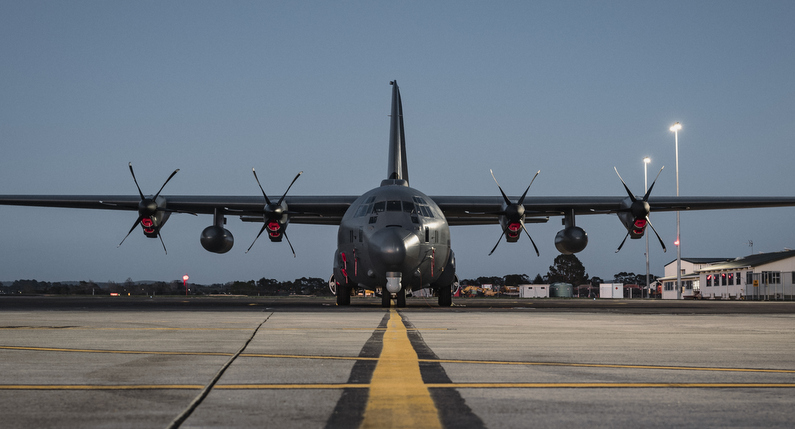
A Herculean effort
How the Royal New Zealand Air Force’s five new C-130J Hercules contribute to our search and rescue capability.
“The last few years have been the start of a significant transitional period for the Air Force. With the recent arrival of the C-130J and P-8A Poseidon, the majority of our Air Force is operating very modern aircraft and helicopters,” says Wing Commander Gareth Russell, Commanding Officer of the C-130J Transition Unit (JTU). “In the past, the Orion maritime patrol aircraft was considered the go-to aviation platform for search and rescue at sea. But with our improved breadth of capabilities, when the Defence Force is asked to support a SAR operation, it’s about choosing the most suitable platform to deliver the effect needed.”
The fleet of five C-130J aircraft arrived in New Zealand between September and November 2024, then went quickly to work. Within two months of arriving, they were flying to one of the harshest environments on the planet, providing logistical support to the New Zealand Antarctic Programme. To an outside observer, the transition to the new aircraft was seamless, but behind the scenes has been a lot of hard work. Our personnel trained for 18 months with the United States Air Force, and developed procedures for how the New Zealand Defence Force will operate them.
“The Hercules is fundamentally a transport platform, but we can use them for a range of missions, including search and rescue,” says Gareth. “The United States Air Force didn’t teach our personnel SAR procedures; it’s the US Coast Guard (USCG) who operate the C-130J for SAR in the most similar way to us. We applied our own knowledge on how SAR works within our region, and supported by USCG procedures, integrated that into the ways the new aircraft are operated.” Although the C-130J airframe, engines and mechanical systems are significantly improved versions of the original 1960’s design, the electronic systems which the crew uses are a step change in technology. “So, although it’s still a Hercules, we have to review, adapt and rigorously test the integration of our procedures into the New Zealand Defence Force context, basic flight operations, maintenance, training and specific missions.”
Gareth and his team at JTU have two main responsibilities. Firstly, planning and executing the trials and development of the C-130J capability, then coordinating the Operational Testing and Evaluation in support of the Directorate of Evaluation (Operating). “Everything gets covered to make sure that we operate the new platform safely and effectively.”
Compared to the legacy C-130H(NZ), the C-130J Hercules climbs faster and higher, flies further at a higher cruising speed, carries more cargo and takes off and lands in a shorter distance. “Since it’s broadly a more capable version of its predecessor, we’re starting with releasing the equivalent SAR capabilities, such as visual searches by day and distress beacon searching by night,” says Gareth.
Two noteworthy new systems on the C-130J are the JetWave high-speed internet and the MX20 visual and infra-red camera. “The way we’re using these new tools is still being developed, but it’s clear that they present opportunities to enhance our capability across many of our roles, including search and rescue. Everyone is looking forward to continuing the proud legacy of Hercules support to vital missions worldwide on behalf of New Zealand.”
Image courtesy New Zealand Defence Force
Read more in Air Force News issue 273 | October 2024
This 42-page issue is dedicated to the new fleet of C-130J Hercules, with a homage to the legacy of the H-model.
After 60 years of service, more than 155,000 accident-free flying hours and nearly 100,000 landings, the last three aircraft in the C-130H(NZ) fleet were retired on 31 January 2025. Image courtesy NZDF https://www.nzdf.mil.nz/assets/Uploads/DocumentLibrary/AirForceNews_Issue273.pdf
Enjoy this story?
Sign up to our Link Newsletter to receive stories like this plus NZSAR news and announcements direct to your inbox.
Follow NZSAR on LinkedIn for more SAR news, announcements and discussion.
This story was originally published in the July 2025 issue of Link magazine, which is produced by the NZSAR Secretariat for the wider search and rescue sector.
